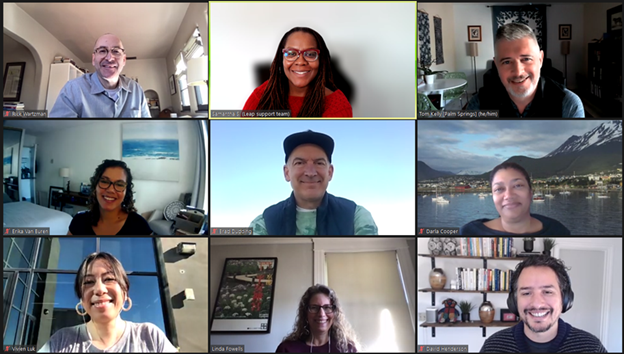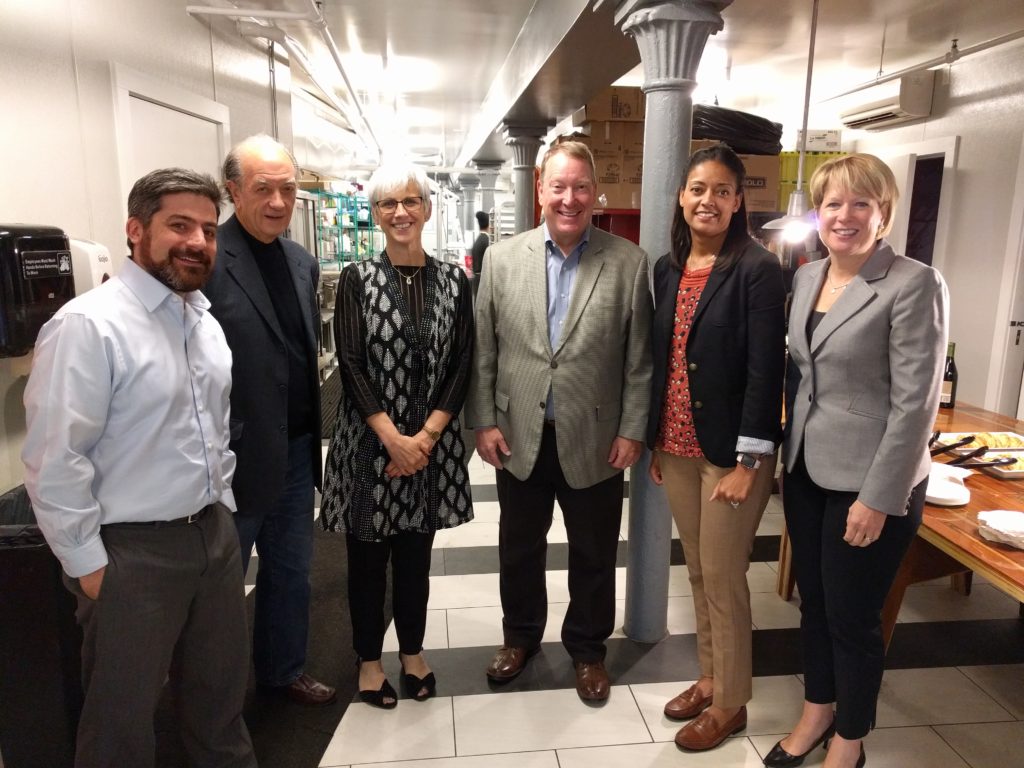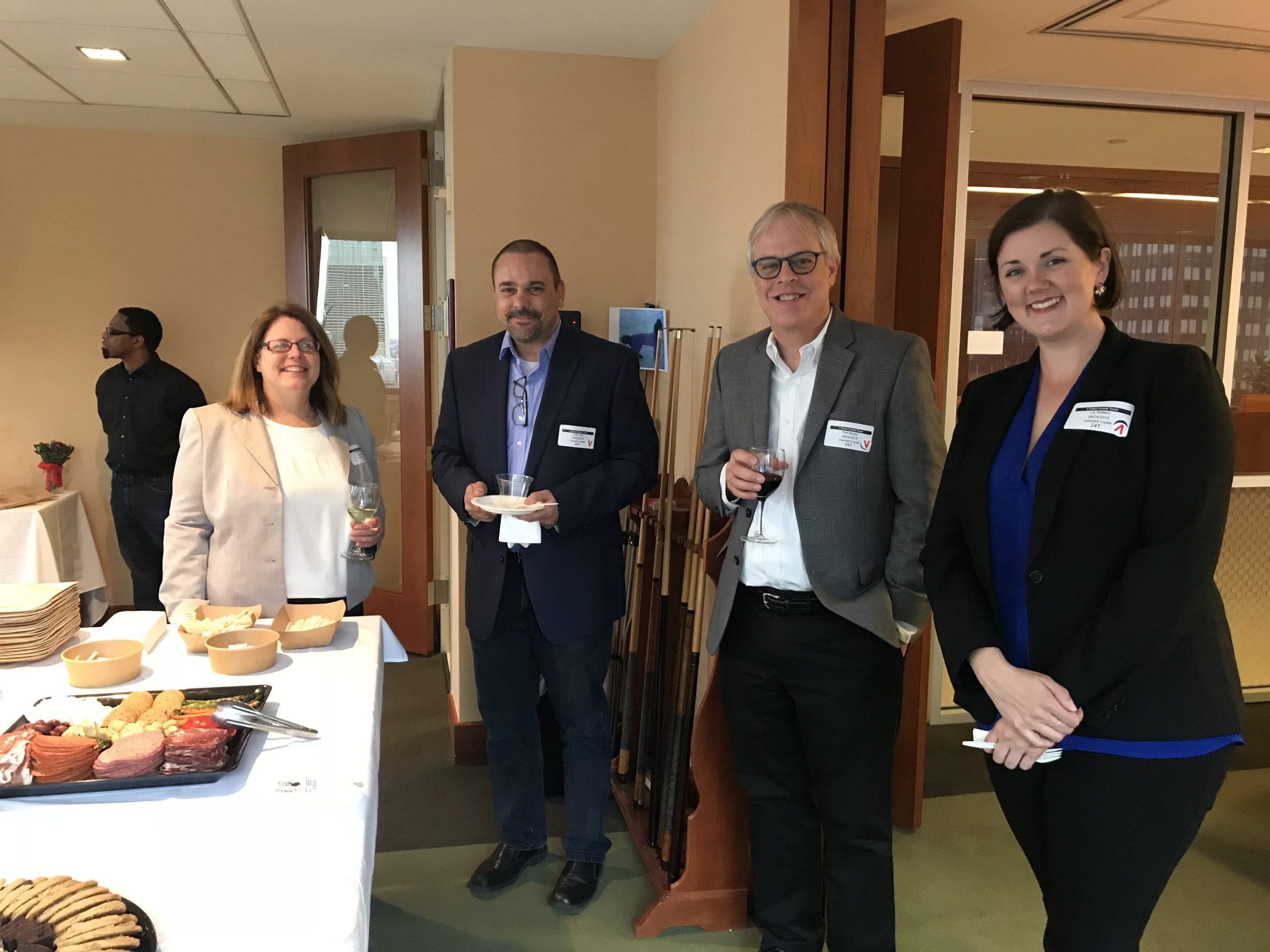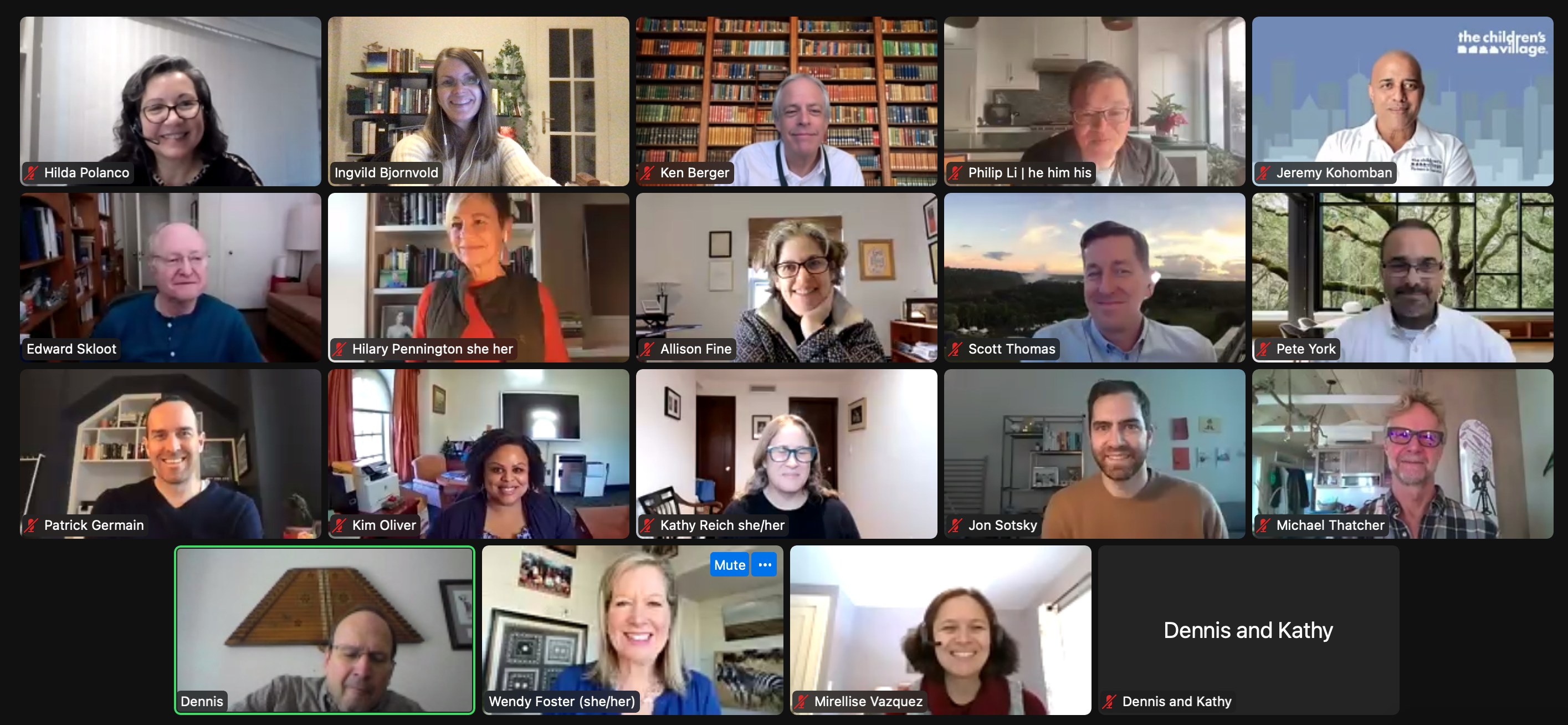Sign up for our monthly Leap Update newsletter and announcements from the Leap Ambassadors Community:
By clicking "Stay Connected" you agree to the Privacy Policy
By clicking "Stay Connected" you agree to the Privacy Policy
The Art and Science of Cultivating a Thriving Online Community

The internet and other advancements in technology allow humans many more opportunities to form and build relationships. Applications like Facebook, Twitter, and LinkedIn are a handful of tools that help remove geographic boundaries, allow people to connect with one another, and be a part of communities that exist mostly or exclusively online. While there still isn’t universal access to the internet or these tools and applications, they provide a viable pathway to greater knowledge and connections.
The WELL (Whole Earth ‘Lectronic Link) is one of the oldest and more vibrant online communities, and an example of what aligned individuals can inspire or accomplish as a part of a virtual network. Since its founding in 1985, its membership has included many transformative doers, including the founders of AOL and Craigslist. Many other online communities have emerged around hobbies, professions, and other interest areas. Harnessing this ability to facilitate meaningful and engaging online interactions, the Leap Ambassadors Community has become another example of a thriving online community.
The Leap Ambassadors Community, established in 2013, is a private, online community of nonprofit leaders, funders, consultants, policymakers, academics, government officials, and other social sector leaders. Connecting nearly 100 percent online, our members exchange, discuss, and debate novel strategies to help the social sector deliver equitable, meaningful, measurable, and financially sustainable results for the people or causes they serve. In more recent years, our members, or ambassadors, have increased their online engagement by offering sound strategies to navigate the COVID-19 pandemic, responses to police-involved murders of Black people, and suggestions for coping with the rise in cost and limited supply of goods—issues affecting our members personally and professionally. Appendix I shares more information about the community’s history and value to its members.
In this paper, Leap support team members, the backbone organization of the Leap Ambassadors Community, offer our observations and lessons learned for forming, building, and nurturing an online community, especially one that can be effective during tough times. Our tips could help you establish an online community’s purpose, choose the right technology platforms, consider and plan opportunities for growth, and achieve a critical mass to support the needs of the community. Additionally, we emphasize the importance of relationships and connections and providing members with an optimal experience.
We acknowledge that not all online communities will be as well-resourced as the Leap Ambassadors Community. Yet, many of these suggestions can be adapted for communities of all sizes. For more information about how the Leap support team has contributed to building and managing the community, read The Leap Support Team: A case study.
Thoughtful planning that goes beyond simply setting up a technology platform will contribute to a successful community. Consider these principles as you lay the groundwork for an online community.

Creating an online community requires a strong purpose, since it’s the foundation on which the collective “we” is built. The most successful online communities have members who believe in the purpose and are willing to intentionally engage. Once roles, responsibilities, expectations, guidelines, and time commitments are established, the founders can solicit feedback from interested parties. In the end, all founding members must agree on and approve the community’s purpose.
The Leap Ambassadors Community established five core strategies to support its mission:
Community managers serve as the glue in an online community. As one ambassador put it, “They make the magic happen.” Although some communities, like the Leap Ambassadors Community, have paid staff members to serve in that role, many other communities are run by volunteers or a much smaller staff. Basic responsibilities include managing the membership list, monitoring the discussion, encouraging members to post, and ensuring that community guidelines are upheld. Based on the community managers’ interests and expertise, they might also provide discussion summaries, convene informal gatherings, and host community conversations or webinars on topics of interest. Even the smallest communities will benefit from one or two highly-engaged individuals who are willing to nurture the community.
Diversity, equity, inclusion, and belonging are key components of an online community, especially when advancing the community’s purpose. Members must feel welcomed, included, safe, and valued in sharing their thoughts and ideas.
The Leap Ambassadors Community’s equity practices evolved after the community’s members realized the community wasn’t as diverse, equitable, or inclusive as it could or should be. The course of action included examining our internal systems and processes and identifying which voices were missing from the community. Posts that focused on equity and inclusion stimulated dialogue and often resulted in an Ambassador Insight. Ambassadors formed a robust micro-community of 50+ members who meet regularly to explore equity and high performance. The support team also began publishing Leap Voices, a series that lifts up the importance of equity and high performance in the social sector. These policies and practices helped foster a pathway to achieving our goals around diversity, equity, inclusion, and belonging.
The criteria for growing your community will vary depending on the decision to create a private or public community, as well as other factors. A public community is accessible by anyone, and discussions and content are available to the public. There are no criteria for joining a public group beyond a shared interest. However, a private community sets membership criteria that helps establish guidelines for who would add value, benefit from the community, and be a good fit for its purpose. It also owns all the data, creates content that can only be viewed by members, and can deny access to those who don’t fit the criteria.
Creators of online communities should think about how, why, and to what degree they want to grow the community. As a private community, the Leap Ambassadors Community decided that the purpose of growing was to:
Working toward a critical mass of members helps the Leap Ambassadors Community achieve lively and vibrant online discussions. Actively inviting and encouraging participation from the critical mass:
The Leap Ambassadors Community hypothesized that 300 members would create the critical mass for our type of community, but each community must determine its own number that will create active participation and lively dialogue.
As the Leap Ambassadors Community grew, some ambassadors were concerned that a sense of intimacy and connection would be lost. Participation in micro-communities, regional online gatherings, in-person meetings, and one-to-one introductions help build trust that leads to broader participation in the larger online forum.

An online community’s success and sustainability center on the active engagement of its members. People engage if they find value, which means that the online community must always put people first.
For the Leap Ambassadors Community, prioritizing members includes:
It’s important for members of online communities to understand the explicit value and benefits that they’re likely to gain from participation. The Leap Ambassadors Community identified the following elements that offer value:
Finding ways to connect with your members intentionally and genuinely is foundational to building and maintaining an online community. Communication with community members should embody a personal touch to the greatest degree possible. This approach helps the Leap support team develop meaningful and lasting relationships among our members. We email personal notes or make personal calls to members when they have advanced the field in a public way. We also reach out to members, as appropriate, when they share personal matters (e.g., a new baby, career change, illness, death in the family). We also provide behind-the-scenes support that includes reaching out to ambassadors with specific expertise around a forum topic or question and encouraging them to post, checking in with ambassadors who post questions to ensure they received responses, nudging individuals who contact the team with specific questions to post to the forum, and curating responses to a topic for the community’s convenience.
Feedback loops to share thoughts about the online community are fundamental to the group’s sustainability. The Leap support team regularly gathers input from our members. We share survey results with the community and details on how we acted on the results. For example, when members provide feedback on written products, we incorporate their input into the updated product or provide an explanation for why we did not. This level of transparency facilitates trust in the Leap support team’s ability to lift up their wishes and recommendations.
The right technology platform is crucial to the success of an online community, but don’t be misled into thinking the chosen platform automatically ensures a community’s success. It’s a tool, and there are numerous options to choose from. Some are free while others can be quite expensive.
We chose Google Groups, because many of the founding members in 2013 were email centric. Other communities have chosen LinkedIn or Facebook groups, probably because their members are already active on those platforms. Alternatively, online forum platforms could provide more options (e.g., more robust customization, content moderation, private messaging). Bottom line: It’s important for your community to consider the users and their daily routines.
We also added an ecosystem of tools, including video-conferencing software (e.g., Zoom or Teams), a customer relationship manager system (e.g., Salesforce), a messaging system (e.g., Slack), and/or an event management system for online conferences (e.g., Whova). The Leap support team finds that it’s most practical to start with simple and inexpensive tools and adapt as the community grows and/or gains traction. It’s also helpful if dedicated support team members or administrators become “experts” in the platform(s) since it’s very likely that others will need assistance in using the systems.

As we described earlier, putting people first is a foundational tenet of our engagement strategy. We believe that active participation is sustained if people find value in relationships, connections, and interesting discussions relevant to their work. To encourage organic, mutually supportive interactions, the Leap support team offers these tips around two key principles: remain flexible and let the community lead.
Appendix II provides additional details about the Leap support team’s roles and responsibilities.

The most successful communities facilitate connections among members and offer a space where ideas and support are freely exchanged. Online communities take advantage of advances in technology to offer many of the same supports across distance and time.
Our experience supporting the Leap Ambassadors Community has illustrated the value of meaningful connections. As our world is increasingly confronted with challenges, uncertainty, and injustice, we’re hopeful that online communities will continue to evolve into agile, vibrant, diverse, equitable, and inclusive spaces in which members can share knowledge, peer support, and resources with each other.
The Leap Ambassadors Community’s support team would like to thank the following individuals for offering valuable suggestions and comments to improve this paper: ambassadors Tosca Bruno-van Vijfeijken, Dave Coplan, David Ehrlichman, Beth Kanter, Marcus Littles, Mary MacPherson, Valerie Threlfall, and, a friend of the community, Steve Fleckenstein.
The Leap Ambassadors Community Support Team: A Case StudyNote: Your community might not have the same team structure as the Leap Ambassadors Community, but these behaviors and activities work, regardless of team size. Communities like ours—a private community, based on a shared interest—need help to evolve and grow. While many communities operate with volunteers or a single administrator, the Leap Ambassadors Community was supported from the beginning by a team of paid professionals from Morino Ventures who had experience related to our community’s mission. While letting the community members lead the direction and set the pace, the Leap support team helped facilitate community growth, discussions, activities, and member participation.A crucial component of the Leap support team’s engagement strategy is to designate a team member, known as a Team Member Assigned (TMA) to each ambassador. The TMA’s primary responsibility is to keep up with assigned ambassadors and their work through calls, emails, and other sources of information (e.g., LinkedIn, Twitter, e-newsletters). Connecting with new ambassadors begins with the onboarding process. The Leap support team conducts onboarding calls 30-90 days after an ambassador has joined the community. During the onboarding discussion, the TMA’s goal is to hear about the ambassador’s experience with the online community, learn more about the ambassador’s work, share the community’s products, and connect the ambassador with other community members. The onboarding call allows the TMA to re-emphasize the community’s purpose and acknowledge the ambassador’s participation to date. For example, if the ambassador posted to the online forum and there were few responses, the TMA would ask if and from whom the ambassador received direct responses. When the TMA acknowledges the ambassador’s participation, it’s key to remind the ambassador that the Leap support team isn’t assessing their participation. The team simply keeps track of each ambassador’s involvement to help determine if they’re engaged and gauge whether to adjust engagement opportunities. An internal Slack channel keeps the team abreast of an ambassador’s accomplishments. The team records updates to an ambassador’s information (e.g., job or position changes, address updates) in Salesforce so every team member can stay up to date. Team members intentionally engage ambassadors through emails and phone calls to learn what’s valuable to ambassadors and what they want from their online community experience. TMAs help ambassadors explore specific ways to benefit, such as identifying a professional challenge when it could be helpful to request the community’s input. One example of how an ambassador can derive value is the request for advice on how funders should compensate stakeholders for their time, an emerging practice which several ambassadors had experimented with. This is also one way that the Leap Ambassadors Community adds value to the field, by sharing these and other insights to a broader, external audience. The Leap support team offers multiple ways for ambassadors to make internal and external connections to others. The internal connections give ambassadors the opportunity to learn about those who do similar work. Building and maintaining relationships with ambassadors helps foster engagement on the online forum (i.e., email communication via Google Groups), which tends to be the launching board for other types of participation. The team also fosters external community connections to amplify ambassadors’ voices. We use social media platforms, particularly LinkedIn and Twitter, and occasional external email blasts to feature ambassadors’ work. The Leap support team strives to create a community culture that allows for a cohesive and productive experience for ambassadors. To accomplish this goal, the team has to be versatile. For the Leap support team, this means that any team member can help support the community at any moment. Being adaptable also means that the team doesn’t operate in a hierarchical structure. The versatility encourages cross-training among team members, so there aren’t any hold-ups when one team member is out or deployed on another project. Leap support team members prioritize responsiveness to meet ambassador needs, including responding to individual emails within 24 hours or less, actively monitoring the online forum, and determining next steps, as appropriate. The team also reaches out to select ambassadors and encourages them to answer unanswered questions on the online forum if the question is aligned with their area of expertise. |
The Leap Ambassadors Community began as a result of the book Leap of Reason: Managing to Outcomes in an Era of Scarcity (2011). Over the course of 18 months, almost 50 individuals came together to form the nucleus of a community dedicated to high performance and continuous improvement in the social sector.
From its inception, the community has believed in bringing together the “doers and believers”—those leading the charge that mission and performance are inextricably linked. Today, the private community is built around committed nonprofit leaders and funders, and augmented by advisors, consultants, policymakers, academics, business leaders, government leaders, intermediaries, and instigators. Their diverse backgrounds, experiences, and perspectives—across sectors, knowledge domains, race, ethnicity, age, gender, and geography—help them serve as individual change agents and contribute to a stronger community. They learn from each other, produce collaborative works, support one another, and benefit from the community’s collective knowledge and experience.
In 2021, we hit the goal of having 300 committed, passionate ambassadors in the community. Through strategic growth, intentional engagement, collaborative development, and thoughtful communication with the broader field, the community is always working toward the ultimate end: greater social impact in the form of more high-performing nonprofits and funders, improved lives, and stronger communities.
For additional information, see Leap Ambassadors Community History and The Impact Evangelist, a 2018 article from The Chronicle of Philanthropy.
To learn more about the community:
Sign up
Receive regular emails from the community
(also available at the bottom of any page)
watch
Check out our videos on Leap Ambassadors YouTube channel
We use cookies for a number of reasons, such as keeping our site reliable and secure, personalising content and providing social media features and to analyse how our site is used.
Accept & Continue